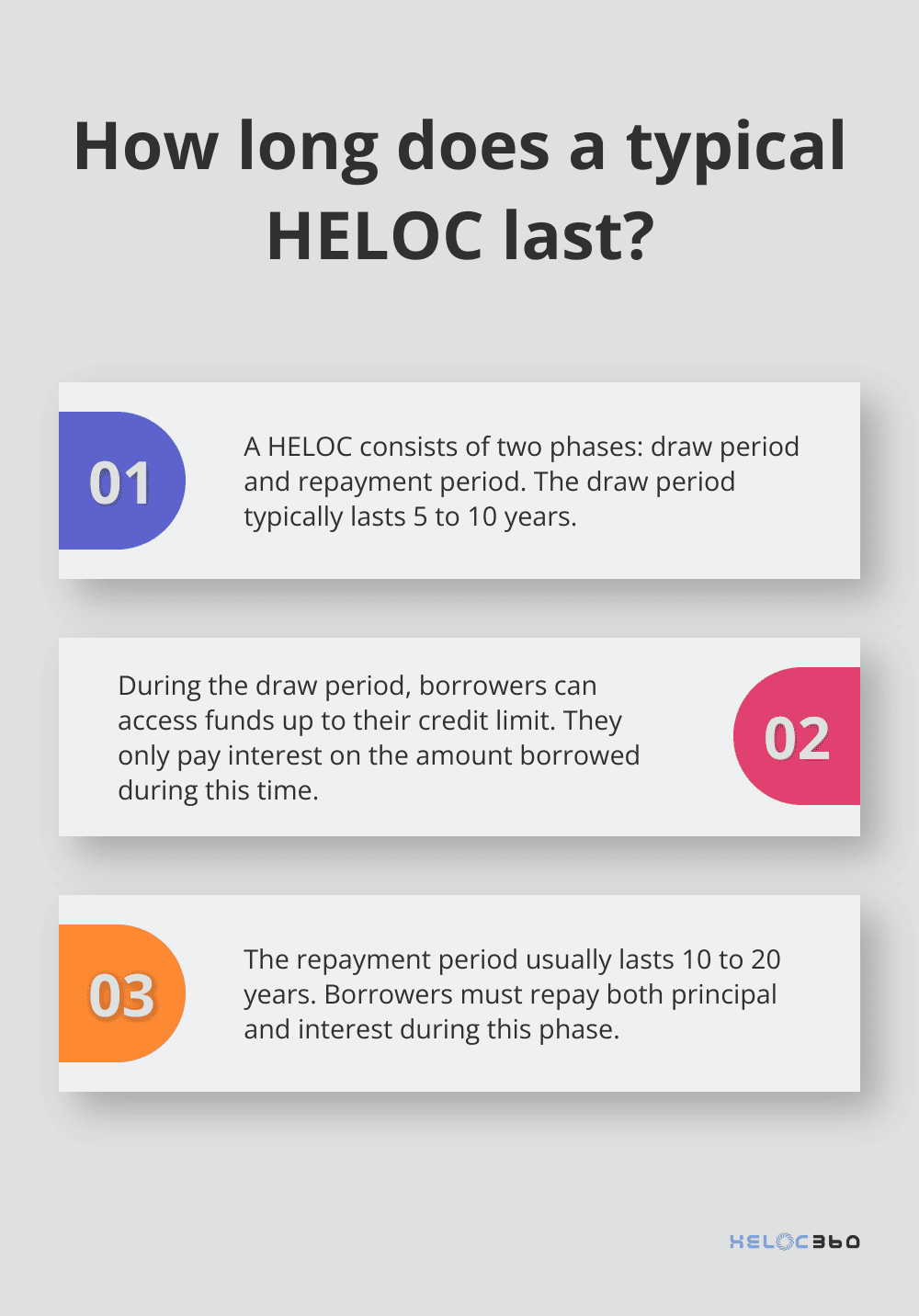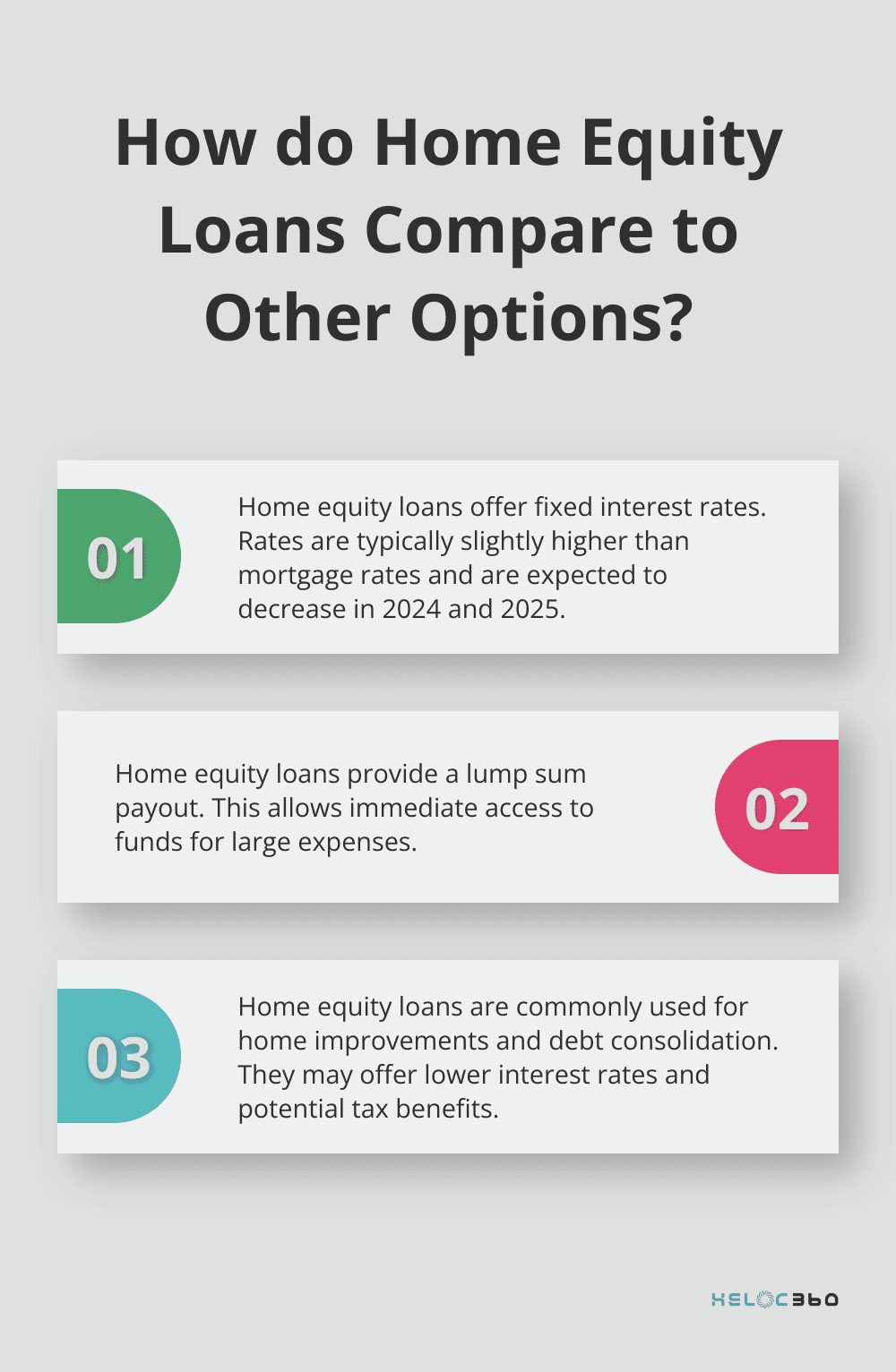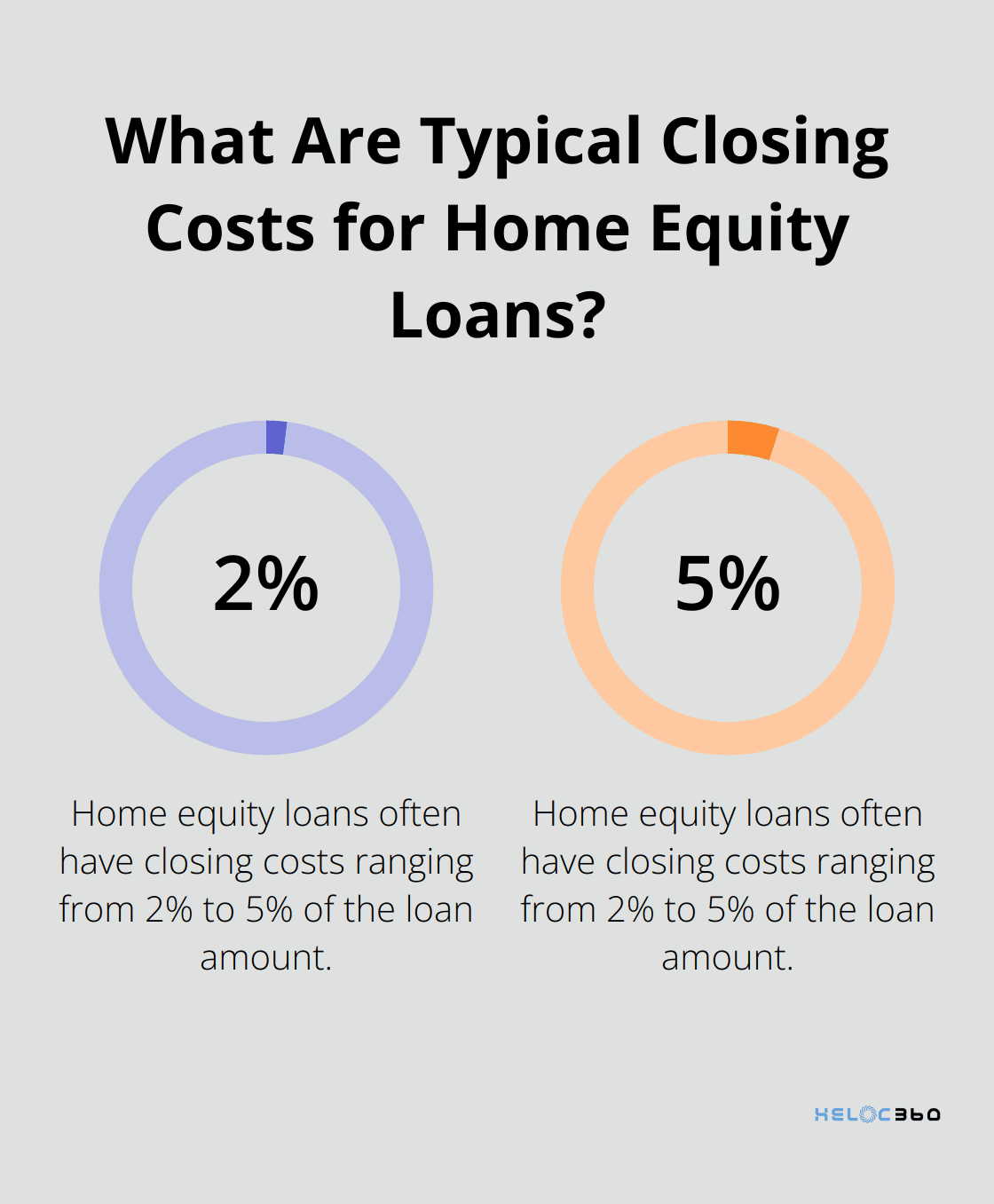- ***PAID ADVERTISEMENT**
- ACHIEVE LOANS – HOME EQUITY EXPERTISE
- FLEXIBLE FINANCING SOLUTIONS
- PERSONALIZED SUPPORT
- RECOMMENDED FICO SCORE: 640+
- COMPETITIVE RATES STREAMLINED APPLICATION PROCESS
Choosing between an equity line and an equity loan can be a pivotal decision for homeowners looking to tap into their property’s value. At HELOC360, we understand the importance of making an informed choice that aligns with your financial goals.
This guide will break down the key differences between these two popular home equity options, helping you navigate the pros and cons of each. We’ll explore how they work, their unique features, and the factors you should consider when deciding which is right for you.


- Approval in 5 minutes. Funding in as few as 5 days
- Borrow $20K-$400K
- Consolidate debt or finance home projects
- Fastest way to turn home equity into cash
- 100% online application
What Is a HELOC?
Definition and Basic Features
A Home Equity Line of Credit (HELOC) is a financial tool that allows homeowners to borrow against their property’s value. It functions as a revolving credit line secured by your home that gives you a revolving credit line to use for large expenses. With a HELOC, you can borrow up to a predetermined limit and use the funds as needed.
The Two Phases of HELOCs
HELOCs operate in two distinct phases:
- Draw Period: This phase typically lasts 5 to 10 years. During this time, you can borrow money up to your credit limit. You only pay interest on the amount you borrow, not on your entire credit line. This structure can result in significant savings compared to traditional loans.
- Repayment Period: After the draw period ends, you enter the repayment phase. This phase usually lasts 10 to 20 years. You can no longer borrow from your HELOC and must start repaying both principal and interest.
Flexibility in Use
HELOCs offer remarkable versatility. You can use the funds for various purposes, including:
- Home improvements
- Debt consolidation
- Business ventures
- Education expenses
- Emergency funds
This flexibility makes HELOCs an attractive option for many homeowners who need access to funds for different reasons.
Potential Tax Benefits
HELOCs may offer tax advantages. As of 2025, the interest on a home equity loan is tax-deductible, provided the funds were used to buy or build a home, or make improvements to one, as defined by the IRS. However, tax regulations can change, so it’s essential to consult with a tax professional to understand how these benefits apply to your specific situation.
Interest Rates and Payments
HELOCs typically come with variable interest rates. This means your payments can fluctuate over time based on market conditions. While this can lead to lower rates in favorable market conditions, it’s important to prepare for potential increases. Some lenders offer rate caps (which limit how high your rate can go) to protect borrowers from dramatic spikes.

Understanding these features is key to determining if a HELOC aligns with your financial goals and circumstances. As we move forward, let’s explore another popular home equity option: the home equity loan.
What Is a Home Equity Loan?
Fixed Interest Rates: A Stable Financial Option
Home equity loans offer a fixed interest rate, which provides stability in an uncertain financial landscape. Home equity loan rates are typically slightly higher than mortgage rates, with rates anticipated to decrease in 2024 and 2025. This fixed rate ensures predictable monthly payments, making budgeting easier for borrowers. Unlike HELOCs with variable rates that fluctuate with market conditions, home equity loans provide a sense of security that many homeowners prefer.
Lump Sum Payout: Immediate Fund Access
When you take out a home equity loan, you receive the entire loan amount upfront. This lump sum payout benefits homeowners with specific, large expenses in mind. Home equity loans may offer lower interest rates and access to larger funds, and there may be tax perks.
Common Uses: From Home Improvements to Debt Consolidation
Home equity loans serve as versatile financial tools for various purposes:
- Home Improvements: Many homeowners use these loans to fund significant renovations or additions that can increase their property’s value.
- Debt Consolidation: With their typically lower interest rates compared to credit cards, home equity loans can effectively consolidate high-interest debt. However, it’s important to address the root causes of debt to avoid falling back into the same financial patterns.
- Education Expenses: As college tuition costs rise, some families turn to home equity loans to fund higher education. The fixed interest rates can be particularly attractive compared to variable-rate private student loans.
- Major Life Events: Whether it’s a wedding, adoption, or starting a business, home equity loans can provide the necessary capital for significant life milestones.
Considerations and Risks
While home equity loans offer numerous benefits, it’s important to note that your home serves as collateral. The Consumer Financial Protection Bureau warns that failing to repay your loan could result in foreclosure. Mortgage servicers are often the first to communicate with struggling homeowners about options available to them to avoid foreclosure. Therefore, you should carefully consider your financial situation and repayment ability before proceeding with any home equity product.

As we compare home equity loans to HELOCs, it’s essential to understand the key differences between these two popular options. Let’s explore how they stack up against each other in terms of interest rates, repayment structures, and flexibility.
HELOC vs Home Equity Loan: Key Differences
Interest Rates and Payment Structures
HELOCs typically come with variable interest rates, while home equity loans offer fixed rates. McBride forecasts that HELOC rates will continue to decline in 2025, averaging 7.25 percent, their lowest level in three years.

With a HELOC, your payments can fluctuate based on market conditions. This can benefit you if rates drop, but it also means you need to prepare for potential increases. Home equity loans provide predictable monthly payments throughout the loan term (which can range from 5 to 30 years).
Borrowing Flexibility
HELOCs offer more flexibility in terms of borrowing. During the draw period (typically lasting 10 years), you can borrow as needed up to your credit limit. This makes HELOCs ideal for ongoing expenses or projects with uncertain costs.
Home equity loans provide a lump sum upfront, which can benefit large, one-time expenses. Home equity loans offer the stability and predictability of fixed rates and payments, while HELOCs provide ongoing access to money when you need it.
Fees and Closing Costs
Both options come with associated fees, but they can vary significantly. Home equity loans often have higher closing costs, ranging from 2% to 5% of the loan amount. These costs can include appraisal fees, title search fees, and origination fees.
HELOCs generally have lower upfront costs but may include annual fees and transaction fees. Some lenders offer no-closing-cost HELOCs, but these often come with higher interest rates.
Repayment Terms
Home equity loans typically require you to start repaying both principal and interest immediately. The repayment term can last anywhere from 5 to 30 years, depending on the lender and your agreement.
HELOCs, on the other hand, often allow interest-only payments during the draw period (usually 10 years). After this period ends, you enter the repayment phase where you pay both principal and interest. This structure can result in lower initial payments but higher payments later on.
Tax Implications
As of 2025, both HELOCs and home equity loans may offer tax advantages. However, the interest on these loans is not always tax-deductible. According to the IRS, you can’t deduct interest on land that you keep and intend to build a home on. Some interest may be deductible once construction begins. It’s important to consult with a tax professional about your specific situation.
Final Thoughts
The choice between an equity line and an equity loan depends on your specific financial needs and goals. HELOCs offer flexibility with revolving credit and variable rates, while home equity loans provide stability through fixed rates and lump-sum payouts. You must consider your risk tolerance, repayment ability, and the potential tax implications of each option when making your decision.

Fees and closing costs associated with each product can significantly impact the overall cost of borrowing. Both options use your home as collateral, so you must have a solid repayment plan in place. The equity line vs equity loan decision can be complex, but you don’t have to navigate it alone.
At HELOC360, we help homeowners make informed decisions about their home equity. Our platform provides solutions tailored to your unique financial goals, simplifying the process and connecting you with lenders that match your needs. We’re here to help you unlock the full potential of your home’s value and turn it into a gateway for new opportunities.
Our advise is based on experience in the mortgage industry and we are dedicated to helping you achieve your goal of owning a home. We may receive compensation from partner banks when you view mortgage rates listed on our website.
